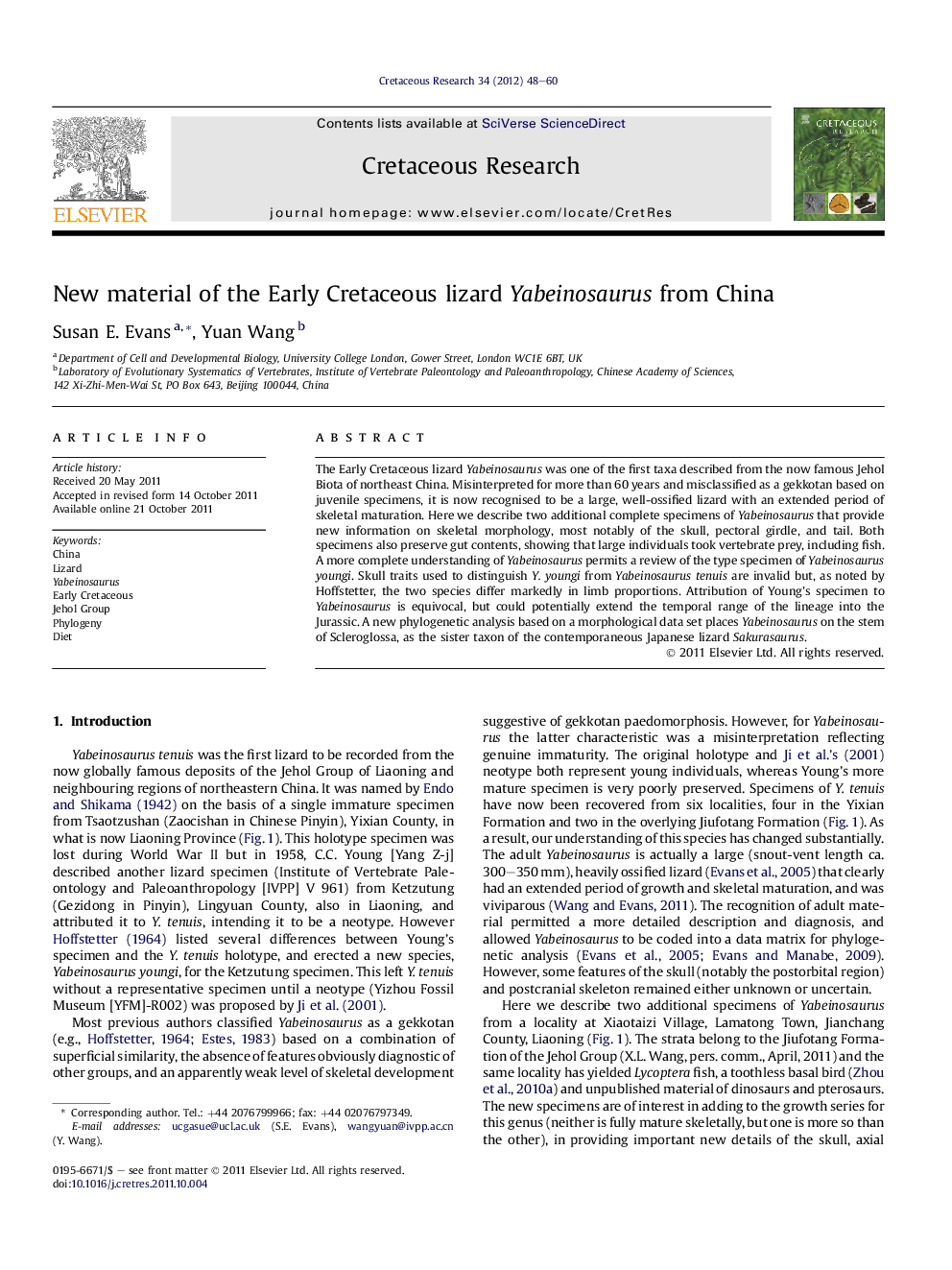| Article ID | Journal | Published Year | Pages | File Type |
|---|---|---|---|---|
| 4747363 | Cretaceous Research | 2012 | 13 Pages |
The Early Cretaceous lizard Yabeinosaurus was one of the first taxa described from the now famous Jehol Biota of northeast China. Misinterpreted for more than 60 years and misclassified as a gekkotan based on juvenile specimens, it is now recognised to be a large, well-ossified lizard with an extended period of skeletal maturation. Here we describe two additional complete specimens of Yabeinosaurus that provide new information on skeletal morphology, most notably of the skull, pectoral girdle, and tail. Both specimens also preserve gut contents, showing that large individuals took vertebrate prey, including fish. A more complete understanding of Yabeinosaurus permits a review of the type specimen of Yabeinosaurus youngi. Skull traits used to distinguish Y. youngi from Yabeinosaurus tenuis are invalid but, as noted by Hoffstetter, the two species differ markedly in limb proportions. Attribution of Young’s specimen to Yabeinosaurus is equivocal, but could potentially extend the temporal range of the lineage into the Jurassic. A new phylogenetic analysis based on a morphological data set places Yabeinosaurus on the stem of Scleroglossa, as the sister taxon of the contemporaneous Japanese lizard Sakurasaurus.
► Two new specimens of the Chinese Cretaceous lizard Yabeinosaurus are described. ► They yield new data on the skeleton permitting a revised phylogenetic analysis. ► Yabeinosaurus and its Japanese sister taxon are placed on the scleroglossan stem. ► Gut contents in the new specimens show that Yabeinosaurus was a fish-eater. ► ‘Yabeinosaurus’ youngi is reviewed and shown to be distinct from Yabeinosaurus tenuis.
